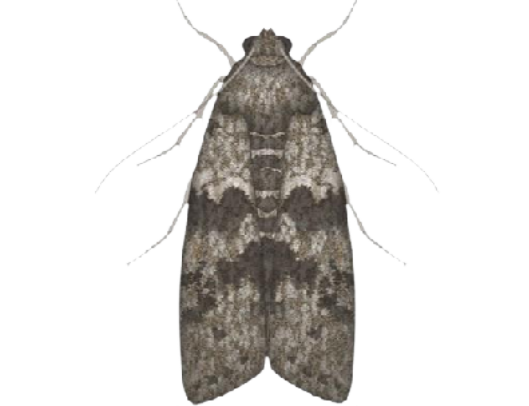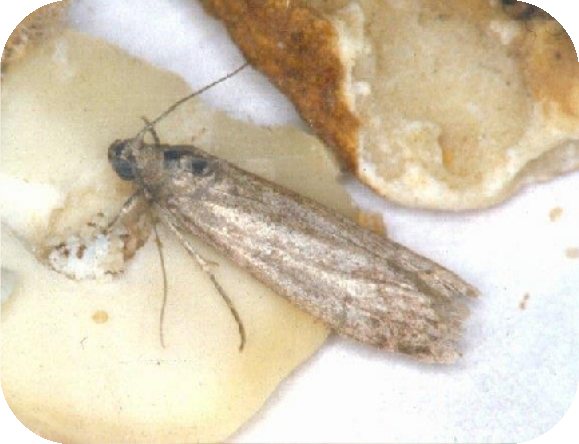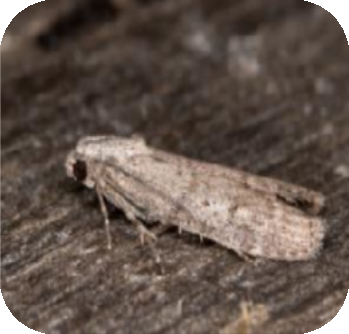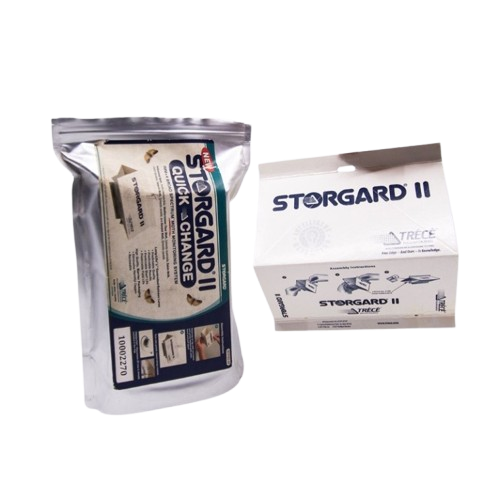Protecting Stored Products from Warehouse Moth: An IPM Approach by TPL Experts
By: Ahmad Mujtaba
Did you know a single female warehouse moth can ruin over 200 kg of stored goods in her lifetime? Moths are the group of insects from the order Lepidoptera, contributing to a number of around 160,000 species worldwide. They are attracted towards artificial lights as they tend to move around them in a circular movement.
Warehouse moth (Ephestia cautella) also known as almond moth, fig moth and dried currant moth is a major pest of stored products. Its peak season starts from May followed by lesser effectiveness in the infestation from September to onwards. The warehouse moth usually thrives in tropical environments and is known to infest stored products like flour, oats, dried fruits & nuts and other grains. In this blog, you’ll exclusively come to know about its mode of damage, lifecycle and IPM approach specially prepared by the TPL experts.
How Warehouse Moth Looks Like…?
- Adult tropical warehouse moths usually grow to around 6mm-10mm in length with a creamy-white coloring and a dark head.
- They have wingspan averaging between 14mm-
- Adult stages are mostly brown or grey having upper
- Its larvae also often exhibit small fine dark
- It has straight dark inner band has broad pale band along inner edge and the outer band is obscure.

Lifecycle:
Larval development of warehouse moth is massively influenced by the environmental conditions like temperature and food supply. Egg laying commences within 24 days of the adult’s emergence and up to 350 eggs are laid during the first 4 days. At 25°C they will be fully grown in 25 days.
Females lay up to 200 eggs near food sources. Their pupation occurs in crevices or packaging folds. Infestation often remains unnoticed until damage is widespread. Warehouse moths complete 4–6 generations per year, depending on temperature and humidity.
Signs of Tropical Warehouse Moth Infestation:
If you observe small grey or brown moths fluttering around, this could mean you have a tropical warehouse moth infestation. However, in larger warehouses or places with high ceilings, this can sometimes go undetected. As such, pheromone lures are effective to detect their infestation.
You may also notice larval stages or eggs within or around food products or spillages. Other signs include silk webbing or faecal matter within stored food products. Medium to large infestations can cause damage to a significant amount of stored food products creating negative financial impact through loss.

Detection:
- Take regular monthly samples and look for webbing & moths itself near surface of grain
- All moths are typically active at dusk and dawn.
Significance of controlling Warehouse Moth:
Control of tropical warehouse moths is important to protect food quality, to prevent food spoilage and prevent economic loss.
By disposing of infested food products, risk to human health is eliminated. However, if large amounts of food product has to be disposed of, this is really bad for business and the environment as well.
Controlling Warehouse Moths | IPM Approach by TPL Experts:
In any case, prevention is always better than to deal with unwanted infestation. An effective integrated pest management IPM approach highly needed when it comes to deal with warehouse moths. Pheromone traps are effective tools for early identification of warehouse moth activity. The following steps are recommended for controlling warehouse moths;
- Thorough cleaning of storage bins, racks, corners, and
- Food storage areas and containers should be regularly inspected to verify moth activity.
- If activity is observed, affected products should be removed
- Use of tight-sealing containers and secure packaging
- Good cleaning practices including regular, detailed deep cleaning of storage containers and storage areas will also aid in preventing infestation by these insects.
- The use of pheromone traps like Storgard II is very effective in controlling such insects.


When to Call a Professional:
Each situation is different. For larger infestations in commercial warehouses or godowns, professional help is usually required to bring such unpleasant insects under control. Warehouse moths may be small, but their impact on food security, trade, and health is immense.
A well-experienced and professional pest control company will be able to establish the best course of treatment in each case. This will ensure any pheromone trap or fumigation service is used safely and appropriately. TPL experts provide all these services with the experience of more than 30 years to trust on.
Don’t let these small invaders eat your profits – consult TPL professionals before it’s too late!
©️ The Planters Pvt Ltd (TPL). All Rights Reserved.

